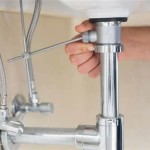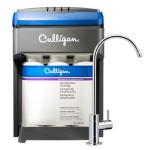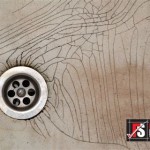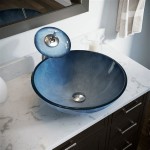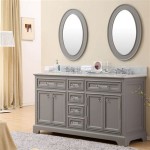Flexible Drain Pipe for Bathroom Sink: A Comprehensive Guide
The flexible drain pipe for bathroom sinks offers a versatile solution for plumbing installations, particularly in situations where traditional rigid piping proves impractical. This type of drain pipe, constructed from materials such as polypropylene (PP) or polyvinyl chloride (PVC), allows for bends and adjustments during installation, accommodating complex layouts and overcoming spatial constraints. Understanding the characteristics, advantages, and limitations of flexible drain pipes is crucial for selecting the appropriate plumbing solution for a given bathroom sink installation.
The primary function of a bathroom sink drain pipe is to convey wastewater from the sink basin to the main drainage system. This pipe must effectively prevent leaks, resist corrosion, and handle the regular flow of water and debris associated with sink use. Flexible drain pipes aim to achieve these objectives while simultaneously offering enhanced adaptability compared to their rigid counterparts. The following sections will delve into the key aspects of flexible drain pipes, including their materials, types, installation processes, maintenance requirements, and common issues.
Materials and Construction of Flexible Drain Pipes
The materials used in the construction of flexible drain pipes significantly influence their performance and longevity. Polypropylene (PP) and polyvinyl chloride (PVC) are the most common materials encountered, each offering distinct advantages and disadvantages. PP is known for its high chemical resistance and ability to withstand high temperatures, making it suitable for handling hot water disposal from the sink. PVC, on the other hand, is more rigid than PP and generally less expensive, but may be more susceptible to degradation from prolonged exposure to extremely hot water or certain chemicals.
The construction of flexible drain pipes typically involves a corrugated design. This corrugated structure allows the pipe to bend and flex without kinking or collapsing, facilitating installation in tight spaces or around obstructions. The depth and pattern of the corrugations play a role in determining the overall flexibility and strength of the pipe. Some flexible drain pipes may incorporate a smooth inner lining to improve flow and reduce the accumulation of debris, minimizing the risk of clogging.
The fittings used in conjunction with flexible drain pipes are also critical components. These fittings, typically made from similar materials as the pipe itself, ensure a secure and watertight connection between the pipe and the sink drain, as well as to the waste arm extending from the wall. Common fitting types include slip joints, compression fittings, and threaded connections. The choice of fitting will depend on the specific requirements of the installation and the compatibility with the existing plumbing.
Advantages of Using Flexible Drain Pipes
The primary advantage of using flexible drain pipes lies in their adaptability. In situations where the sink drain and the waste arm do not align perfectly, or where obstacles impede a straight pipe run, a flexible drain pipe can be easily maneuvered to accommodate the misalignment. This eliminates the need for complex cutting and re-fitting of rigid pipes, potentially saving time and labor during installation.
Furthermore, flexible drain pipes are generally easier to install than rigid pipes, especially for DIY projects. The ability to bend and shape the pipe allows for simpler connections, reducing the risk of errors. The lightweight nature of the materials also contributes to ease of handling and installation. This ease of installation can be particularly beneficial in older homes where plumbing configurations may be unconventional or access is limited.
Another advantage of flexible drain pipes is their resistance to vibration and movement. Unlike rigid pipes, which can transmit vibrations from the plumbing system to the surrounding structure, flexible pipes absorb these vibrations, reducing noise and preventing potential damage to joints and connections. This flexibility also allows the pipe to accommodate minor shifts in the sink or plumbing system due to building settlement or thermal expansion.
In addition to these practical benefits, flexible drain pipes can also be more cost-effective than rigid piping solutions, particularly when considering the overall installation cost. The reduced labor associated with installation and the elimination of the need for specialized tools can result in significant cost savings. However, it is crucial to consider the long-term durability and potential maintenance requirements of flexible pipes when evaluating their overall cost-effectiveness.
Potential Issues and Maintenance of Flexible Drain Pipes
Despite their advantages, flexible drain pipes are not without potential drawbacks. One common issue is their susceptibility to clogging. The corrugated design can create pockets where debris can accumulate, leading to reduced flow and eventual blockage. This is particularly true if the pipe is not installed with a proper downward slope, allowing water to drain freely.
Another potential issue is the durability of the material. While PP and PVC are generally resistant to degradation, they may be susceptible to damage from harsh chemicals or extreme temperatures. Over time, repeated exposure to these conditions can cause the pipe to become brittle and crack, leading to leaks. It is important to select a flexible drain pipe that is specifically designed for bathroom sink applications and to avoid using harsh drain cleaners that can damage the material.
Maintaining a flexible drain pipe involves regular inspection and cleaning. Periodically checking the pipe for leaks, cracks, or signs of deterioration is crucial. If any issues are detected, the pipe should be replaced immediately to prevent further damage or water leakage. Cleaning the pipe can be done by flushing it with hot water or using a drain snake to remove any accumulated debris. Avoid using chemical drain cleaners, as these can damage the pipe material and potentially harm the environment.
Proper installation is also critical for preventing issues with flexible drain pipes. Ensure that the pipe is installed with a consistent downward slope to promote drainage and prevent the accumulation of debris. Tighten all fittings securely to prevent leaks, but avoid over-tightening, which can damage the pipe or fitting. When routing the pipe, avoid sharp bends or kinks that can restrict flow and create points of stress.
Selecting the appropriate length of flexible drain pipe is also essential. Using a pipe that is too long can result in excessive sagging and potential clogging, while using a pipe that is too short can place strain on the fittings and increase the risk of leaks. Measure the required length carefully before purchasing the pipe, and allow for some extra length to accommodate minor adjustments during installation.
Furthermore, consider the diameter of the flexible drain pipe. The diameter should be sufficient to handle the expected flow of water from the sink. A pipe that is too narrow can restrict flow and increase the risk of clogging. Consult with a plumbing professional if you are unsure about the appropriate diameter for your specific sink and plumbing configuration.
The compatibility of the flexible drain pipe with the existing plumbing system is another important consideration. Ensure that the pipe and fittings are compatible with the materials and dimensions of the sink drain and the waste arm. Using incompatible components can result in leaks, improper connections, and potential damage to the plumbing system.
Finally, when selecting a flexible drain pipe, consider the reputation of the manufacturer. Choose a reputable brand that is known for producing high-quality plumbing products. Reading online reviews and consulting with other homeowners or plumbing professionals can provide valuable insights into the performance and reliability of different brands and models.
In summary, flexible drain pipes offer a convenient and adaptable solution for bathroom sink plumbing installations. By understanding the materials, advantages, limitations, and maintenance requirements of these pipes, homeowners can make informed decisions about their plumbing needs and ensure a long-lasting and reliable drainage system. Proper installation, regular inspection, and appropriate maintenance are crucial for maximizing the lifespan and minimizing the potential issues associated with flexible drain pipes.

Oatey Form N Fit 1 2 In White Plastic Sink Drain Flexible P Trap C3522605 The Home

Simple Drain Rubber Sink Kit

Simple Drain 1 25 In Rubber Threaded P Trap Bathroom Single Sink Kit 3ea 1v2 Tc0 The Home

Flexible Drain Pipe Angle Simple 1 4 Extension Hose Tail B

Bathroom Kitchen Flexible Tube Pipe Sink Basin Water 1 2 P Trap Drain Hose

Simple Drain 1 25 In Rubber Threaded P Trap Bathroom Single Sink Kit 3ea 1v2 Tc0 The Home

Sink Drain Flexible P Trap With Anti Odor Check Valve

Afqh Flexible Sink Drain Pipe Expandable S Trap For Bathroom And Kitchen Sewer

Crushproof Tubing Simple Drain 1 25 In Rubber Threaded P Trap Bathroom Single Sink Kit White

Flexible Electroplated Sewer Pipe For Kitchen Bathroom Sink And Drain 36 79cm Length Stretchable Toilet Supply Hose


